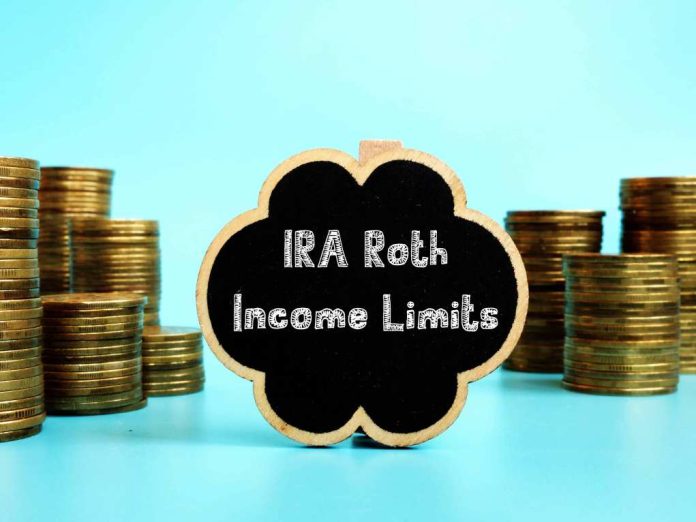
The debate between Roth vs traditional IRA income limits has been going on for years, with each side touting the benefits of their respective accounts. A Roth IRA and a Traditional IRA are both retirement savings accounts that have different tax implications for those who choose to make contributions. But the main difference between them lies in their income limits.
Below, we’ll unveil the limits on income for both accounts to help you make the right choice. Then, we’ll talk about a few other differences between each of these retirement accounts. We won’t waste any more time – here are the differences you need to know about…
What are the Roth IRA vs Traditional IRA Income Limits?
Luckily, even though understanding the tax differences can be confusing, it won’t be hard to learn the limits. For a Traditional IRA, there are no income limits. Anyone that is 18 years old or older that has earned income can deposit into a Traditional IRA. However, individuals may run into limits when determining how much could be tax-deductible.
On the other hand, it’s a different story when it comes to a Roth IRA. Let’s look at 2021 for example! The limits for a Roth IRA were:
- $125,000 for a single filer
- $198,000 for joint filers
Other Differences Between the Roth vs Traditional IRA Account
Now that you know the Roth vs traditional IRA income limits, you may feel like you have a better understanding of which retirement plan is best for you. However, the income limits of Roth IRAs and traditional IRAs aren’t the only differences between these retirement accounts.
To help you make the right choice based on your unique circumstances, here are the other key differences between Roth IRAs and traditional IRAs – starting with how you pay taxes on contributions or withdrawals.
Roth IRA vs Traditional IRA Tax Benefits
Each IRA option provides tax benefits. However not each account provides the same opportunity. When it comes to a Traditional IRA account, the funds that you deposit are made with pre-tax dollars. That means they can be used as a tax deduction when you file. Applying this tax deduction reduces the amount of income you pay income taxes on!
However, since you see tax benefits right away, you won’t be able to expect them down the line. That’s because when you take out withdrawals by the retirement age you will deal with the ordinary tax rate since the withdrawals are seen as taxable income. If you withdraw the funds before your retirement age then you will still have to deal with taxes but you may deal with penalties too.
On the other hand, a Roth IRA is different. That’s because a Roth IRA is funded with after-tax dollars. That means the contributions cannot be seen as a tax deduction. However, even though people can’t see the tax benefits right away, they are still there. Instead, a person will see the benefits when it comes time to make a qualifying withdrawal.
As long as the person is of retirement age and meets the 5-year rule, the money they take out of a Roth IRA will not deal with any taxes on earnings. Just keep in mind that if the person does not meet a qualifying distribution then it is subject to penalties and taxes.
Other Considerations Between Roth IRAs and Traditional IRAs
Beyond how you pay taxes, there are other considerations when determining which type of retirement plan works best for you.
For instance, one should consider how long they intend to stay invested in an account (Roth IRAs require funds remain in the account for at least five years before withdrawals can be taken without penalty) and whether or not they need access to their funds prior to retirement (Traditional IRAs typically allow for early withdrawals though penalties may apply).
When in doubt, get in touch with a professional to discuss your options. Or, explore our blog for more information on the debate over which is better: traditional or Roth IRA. We can also help you learn about when are Roth IRA distributions taxable, and all about the IRA vs 401k topic.
Final Thoughts on the Roth vs Traditional IRA Income Limits
When it comes to planning your retirement, there are plenty of accounts to consider. Two popular options are a Traditional IRA and a Roth IRA. Even though these accounts may be similar, there are some key differences that matter.
Knowing these differences is important because it can help you find which account is best for the goals you are trying to reach. Each IRA option provides tax benefits. However, with a Traditional IRA, you will typically see tax benefits right away compared to a Roth IRA where you will generally see tax benefits at your retirement age.
Remember – a traditional IRA has no income limits. On the other hand, the limits for a Roth IRA are $125,000 for a single filer or $198,000 for joint filers. Now that you know the Roth vs traditional IRA income limits, the answer as to which is right for you may be obvious. If not, though, simply consider the other differences between traditional and Roth IRAs – such as how you pay taxes.
















